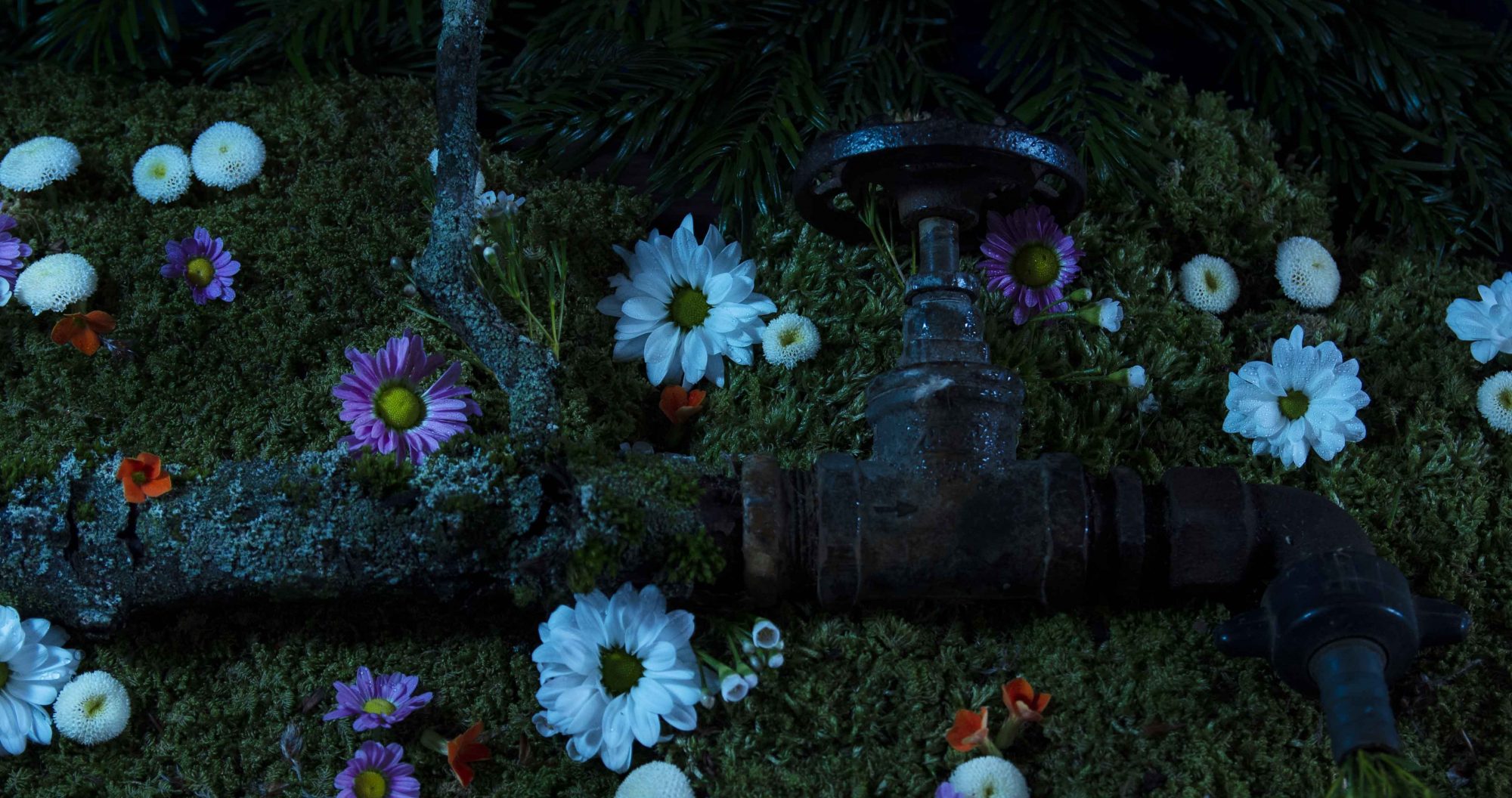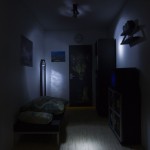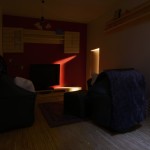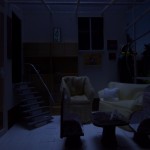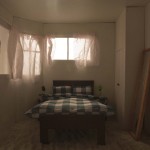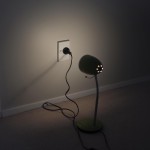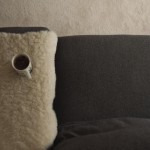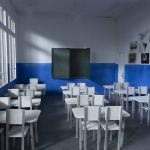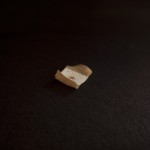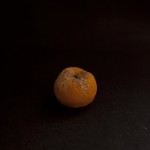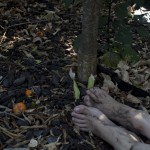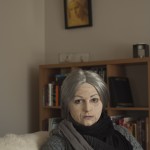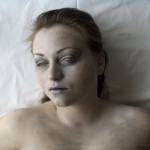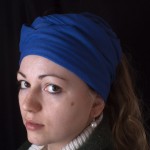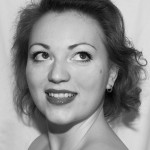There is a notion that rooms and memories have always been bound up together. This project is concerned with interiors from my past and present. How does memory work, how do we remember spaces, especially those we have lived in? What happens to those memories over time, what happens to these rooms? How does the familiar suddenly become alien and uncanny? These are the themes that inform my practice. This essay is to explain how I work with these themes and how they inform my image making.
The uncanny has been a continuous thread throughout my practice. Sigmund Freud describes aesthetics as the theory of qualities of feeling (1919) when he said: “People vary so very greatly in their sensitivity to this quality of feeling.” The uncanny is such a feeling. Something that sits odd in its surroundings produces a feeling of something familiar turning into something unfamiliar and alien. In his essay Zur Phsychologie des Unheimlichen (1906) Ernst Jentsch attributed this feeling of uncannieness [sic] to a central anxiety brought about by a lack of orientation, a sense of something new, foreign and hostile, something invading an old, familiar, regular world (Vidler, 1992, p.23). The uncanny offers itself as a useful way to account for an elusive but perceptible and persistent sense of alienation and dislocation (Albano, 2012, p72). As Freud stated, an uncanny effect is easily produced by eradicating the difference between imagination and reality, such as when something that we have until now regarded as imaginary appears before us in reality, or when a symbol takes the full function and significance of the thing it symbolizes (1919). This effect on the viewer of disorientation and doubt is one methodology I use within my image making.
Even though most people no longer believe in miracles and everything should be explained according to the laws of nature, some things that are not easily explainable are often perceived as uncanny (Eco, 2007, p.320). Situations that are unable to be explained, that are distressing and “not going the way they should” (Eco, 2007, p.320) are uncanny. Since the digital age, where images can be manipulated and the fantastic can become real, the uncanny is becoming ever more present in art.
In 1958 Gaston Bachelard wrote in his essay House and Universe that memories of our childhood home can become detached from us as our dreams become so distant and dateless that memory starts to mingle with imagination (Farr, 2012, p.59-61). “Our past is situated elsewhere, and both time and place are impregnated with a sense of unreality. It is as though we sojourned in a limbo of being” (Bachelard in Farr, 2012, p.59-61). Memory, as described by Olliver Dyens, is a matrix. It is a moving, unstable and evanescent language that is constantly renewed but eternally recognized and decoded (Farr, 2012, p.78). “Something unreal seeps into the reality of the recollection that is on the borderline between our own personal history and an indefinite pre-history, in the exact place where, after us, the childhood home comes to life in us” (Bachelard in Farr, 2012, p.59-61). Bachelard furthermore describes that this part of un-reality, in dreams of reminiscence, affects the dreamer when faced with the most concrete thing: the stone house to which he returns.
The locus suspectus project is the attempt to remember and re-create feelings of spaces I have lived in, felt safe in, or in case of the class room, felt uncomfortable and unsure. The models are hand-crafted by me, to create an emotive response that cannot be created with something mass-produced. I work in miniature as I do not have access to these spaces, either through physical spatial limitations or time limitations, as some do not exist anymore, at least not in the state as I remember them or inhabited them. Only by re-building these spaces can I create this feeling, using light and post-production it gives me the control both of what is seen and what remains hidden. I am creating these models from a mixture of sources: my personal history, my parent’s memories as well as images of spaces in their current form taken by my mother.
Edward Hollis says in his book The Memory Palace- A Book of Lost Interiors (2013) that some interiors flash into and out of existence within seconds. But they all disappear in the end. Rooms disappear, and consequently any history of the interior encounters a problem of evidence (Hollis, 2013, p.8-9). To remember something is normally done though technology. It is a conscious decision and act to remember something. Just the memory is not enough. I, and most people for that matter, want something more palpable, something you can never loose and also share with others. “When I am nostalgic about a remembered event of my life, I can only be so through a machines recording and filtering of it” (Dyens in Farr, 2001, p.79). By photographing these spaces I am fixing the evidence, the feeling in time and space. It is the reality of my feelings that I am trying to preserve, as this will never be the same anymore if and when I return. These spaces are part of a fluid, always evolving reality, and so am I, always evolving though my experiences. By creating these spaces and then photographing them I can never destroy or change this particular feeling or taint it with something new, I can preserve it.
With memory there is no way of proving its authenticity, which can only be made more doubtful when using digital technology. Or as Mario Praz wrote in his book An Illustrated History of Interior Decoration: from Pompeii to Art Nouveau in 1964:
The precision of miniatures of interiors… has something odd about it. For who [sic], in ordinary life, ever observes with such minute accuracy the decoration of a room? Who doesn’t limit himself to embracing the whole with a general glance, deriving vague and sometimes quite illusory impressions from it? If the owner themselves… can often not exactly remember all the details of the rooms they live in, how can we expect more casual visitors, or occasional guest? So it is not surprising that describers of the same room at times contradict one another… (Praz in Hollis, 2013, p.9)
The spaces I have re-created are the living room from my parent’s home in in Berlin, Germany in its present form (2013). Some aspects in the re-creation are from my memory of this room, as my parents have re-decorated since I moved out, but I have visited them since, so memory and reality are mixing. Another interior is the room from my childhood when I was between the ages of 15 and 22. Since I moved out my parents have repurposed my room to their study and gym. The third interior is my grandparent’s conservatory, a space that was added to the original part of the house. I had to make this model largely through working from an image, although all the furniture in this room are from their old living room and very familiar to me. And lastly there was my bedroom in New Zealand. This room, as well as the others will cease to exist at some point; all that is left will be the memory.
All of these spaces are or were important to me, I am very familiar with them, or rather was. Through building a model I have created a doppelgänger of the room, which Freud explains is one aspect of the uncanny, and furthermore created a déja-vu effect for me, another aspect of the uncanny.
To conclude with a statement of Edward Hollis: “Interiors do not just remind us who we are, where we from or how to behave. They remind us to remember.” (2013, p.15)
References
Albano, C. (2012). Fear and Art in the Contemporary World. London, UK: Random Press
Bachelard, G. (1958). House and Universe. In Farr, I. (Ed), Memory-Documents of Contemporary Art (2012). (pp.59-61).London, England: Whitechapel Gallery
Casebere, J. (2008). Cell#2 [image]. Retrieved 04/18/2013 from www.jamescasebere.com
Crewdson, G. (2005) Untitled (Beneath the Roses) [image]. Retrieved 04/22/2013 from www.whitecube.com
c/o Berlin (2011). Gregory Crewdson – In a Lonely Place [Exhibition Catalogue]. Berlin, Germany: c/o Berlin Gallery
Dyens,O. (2001). The Sadness of the Machine. In Farr, I. (Ed), Memory-Documents of Contemporary Art (2012). (pp.75-79).London, England: Whitechapel Gallery
Eco, U. (2007). On Ugliness. New York, NY: Rizzoli International Publishing
Freud, S. (1919). The Uncanny. Retrieved 05/03/2013 from www.nasaht.com.au
Hollis, E. (2013). The Memory Palace- A Book of Lost Interiors. Portobello Books: London, England
Vidler, A. (1992). The Architectural Uncanny. London, England: MIT Press
